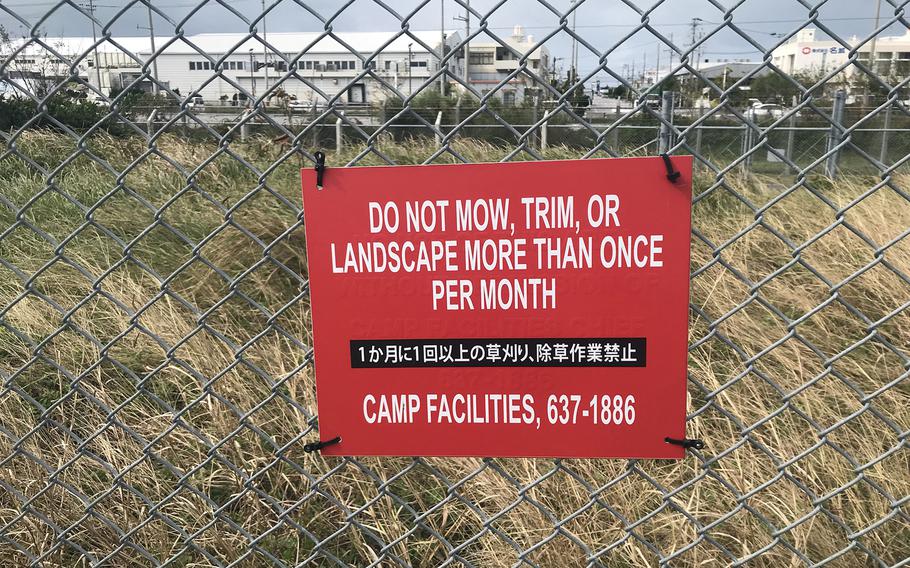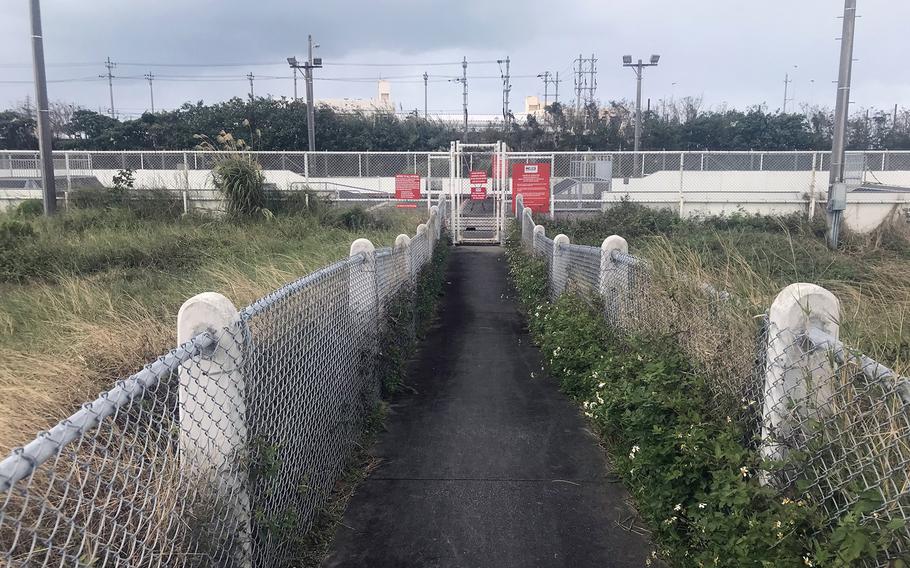Marine Corps
Marine Corps reports high levels of toxins at Okinawa base, but no ‘human health’ risk
Stars and Stripes February 8, 2023

A “human health risk assessment” by the Navy and Marine Corps Public Health Center, from Oct. 16, 2019, revealed high levels of dioxin and pesticides at three spots on Camp Kinser, Okinawa. (Matthew M. Burke/Stars and Stripes)
CAMP KINSER, Okinawa — A Marine Corps report in 2019 detailed high levels of toxins at this seaside logistics base on southern Okinawa but concluded they posed no risk to the base population.
A “human health risk assessment” by the Navy and Marine Corps Public Health Center, from Oct. 16, 2019, revealed high levels of dioxin and pesticides at three spots on Camp Kinser.
The Okinawa Times obtained the document through the Freedom of Information Act and first reported on it Jan. 16. Marine Corps Installations Pacific responded to the Times article afterward and later provided Stars and Stripes a copy of the health center’s report on Jan. 24.
While the levels were reportedly not high enough to induce cancer, they exceeded U.S. Environmental Protection Agency safety standards, according to the document’s authors.
However, in November and December 2018, when the soil samples were taken, the toxin levels potentially posed a “substantial impact to human health and safety” in at-risk populations like children and landscapers, the report states.
"Measures including fencing and signage were implemented in those specific areas to prevent exposure to Camp Kinser workers and residents," Marine spokeswoman 1st Lt. Ashleigh Fairow said in a statement emailed Jan. 20. "There is no current risk to human health in these areas."
The fencing around the problem areas was completed in March 2021, Fairow said in an email Tuesday. The pollutants presented no threat outside the base, she said, citing information in the report.
Exposed to the elements
The health center launched the study in 2018 due to a congressional inquiry from U.S. Rep. Julia Brownley, the report said. The California Democrat made the inquiry after receiving a letter from a concerned constituent with a grandson stationed in Japan.
Kinser was once home to the Makiminato Service Area, where “large amounts” of Vietnam War-era chemicals were stored in the late 1960s to early ‘70s, according to a 1993 U.S. Forces Japan position paper. The chemicals included insect, rodent and plant killers, along with acids, alkalis, degreasers and solvents.
The barrels were exposed to the elements for long periods and their contents leaked into the soil, which then seeped into the sea, according to the paper.

A “human health risk assessment” by the Navy and Marine Corps Public Health Center, from Oct. 16, 2019, revealed high levels of dioxin and pesticides at three spots on Camp Kinser, Okinawa. (Matthew M. Burke/Stars and Stripes)
Pesticides, dioxin — a component of Agent Orange — and the cancer-causing chemical compound polychlorinated biphenyl, or PCB, were detected after mass fish deaths in 1974, 1975 and 1986, the paper said.
Makiminato occupied the area that extends south from the Kinser Fitness Center to just south of the dental and medical clinics, the health center’s report said. Contaminated soil removed from that area was later used as fill in the vicinity of Kinser Elementary School and the adjacent sports fields.
Approximately 183,000 square feet of the former Makiminato site at the southwest corner of the base was returned to local control in March 2019, Fairow wrote on Feb. 7.
‘Potentially hazardous’
The health center found the toxic equivalent of 0.0025 milligrams per kilogram of the dioxin 2,3,7,8-Tetrachlorodibenzodioxin in the area of Maintenance Building 1304, an outdoor exercise facility and the base's skatepark, the health center’s report said.
That is more than 500 times the EPA's carcinogenic screening level of 0.0000048 milligrams per kilogram for dioxin, according to data on the EPA’s website, and more than double Japan's safe soil standard of 0.001 milligrams per kilogram, a spokesman from Japan's environment ministry told Stars and Stripes on Jan. 25.
The EPA considers values below the carcinogenic screening level to be "negligible," the health center’s report said. EPA classifies 2,3,7,8-Tetrachlorodibenzodioxin as a "probable human carcinogen," according to a factsheet from 2016.
The fields surrounding the base medical clinic registered 0.00066 milligrams per kilogram of 2,3,7,8-Tetrachlorodibenzodioxin, more than 100 times the EPA carcinogenic screening level, the health center’s report said. This area was deemed potentially hazardous to children.
Removal request
An area along the fence line, halfway between the dental clinic and a fenced drainage area, recorded 24 milligrams per kilogram of dichlorodiphenyldichloroethane, or DDD, which is similar to the banned pesticide DDT, according to the report. That is more than 10 times the EPA carcinogenic screening level.
DDT has been banned in the United States and Japan for decades, according to the EPA’s website.
The health center also recorded elevated levels of PCBs, arsenic and dieldrin, the report said. The center recommended its findings be communicated to the base community.
The Urasoe city assembly on Tuesday expressed concerns over the contaminated soil and voted unanimously to request its removal prior to the handover of any base land back to local authorities, which is slated to begin after 2025, a city spokesman told Stars and Stripes by phone Wednesday.
The request is being sent to Prime Minister Fumio Kishida, Japan’s defense and foreign affairs ministers and other top political authorities.
It’s customary in Japan for some government officials to speak to reporters on condition of anonymity.